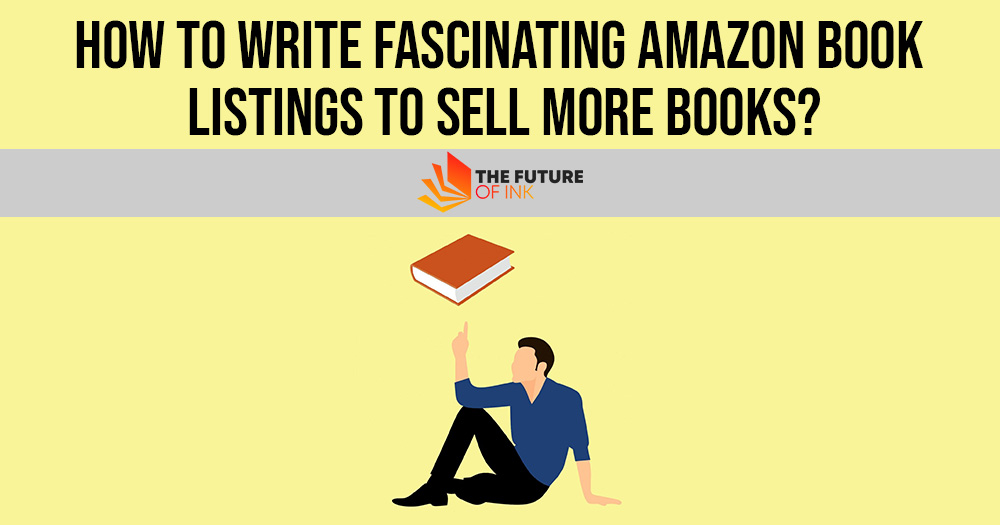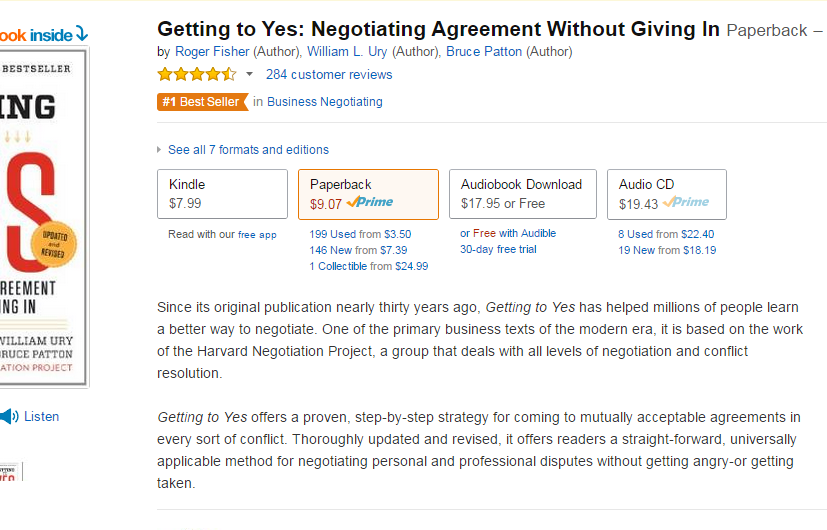Contents
Instead of approaching book sales from the viewpoint of the author, I want you to pay attention to your own shopping habits when buying books from Amazon.com.
As a customer, what do you look for during your search? Of course, the title is all-important. If the title doesn’t capture attention and convey a solid message about what the reader can expect, you’re in trouble right from the start.
But what else appeals to you when looking for a book online?
If you’re like most customers, the book description is crucial in convincing you that the publication you thought you might like to buy is a must-read for sure.
If you take the time to look around at best-selling books on Amazon, you’ll see that the heavy hitters have a lot of things in common when it comes to their descriptions.

I’ll evaluate the top three here so you can use them to write (or beef up) your Amazon book listings and make more sales.
Also Read: Sell More Books on Amazon – Understanding Keywords, Categories, and Amazon’s Algorithms
One – Focus On End Results
People buy books for a reason. Most don’t just purchase and then store them on a physical or virtual shelf as collector’s items. They want something from your book.
What is it? And is that “something” enough to convince shoppers that your work is worth their time and money?
There’s an old marketing question that encapsulates the customer’s mindset: What’s in it for me? Will your book provide information that:
- entertains – novels or autobiographies
- educates – textbooks or how-to books
- empowers – business books that teach money-making skills
- enlightens – reference books
…or something else?
Here’s a fictitious example. Let’s say your book is a business publication that will teach people a new skill. Is learning that skill set the end result?
Nope! The result is what readers will be able to accomplish with that new skill. If your book entitled “The ABCs of List Building” is about showing authors how to build a list of adoring fans, that’s great.
Most people would love to have a loyal following, but the interest in your book would be short-lived if the authors didn’t understand how to apply that to their business and get something in return, namely, a result.
Explain to your prospective readers that — using the list-building magic you talk about in your book — they can develop a marketing plan that automatically promotes their current books and new publications so they literally earn money while they sleep. Now, that’s interesting!
Here’s a good example:

Two – Use Power Words
Depending on what genre you’re writing, chances are good that the content of your book is not written using copywriter-speak.
Most authors are not copywriters (or professional marketers, for that matter) and, while you can bang out book after successful book, you might struggle when it comes to creating a sales message.
One of the easiest ways to make your book description more enticing is to use power words. No, not hype. I’m talking about words with a little oomph: words that paint vivid mental pictures.
What if you went to Amazon and found this book description:
In Quiet, Susan Cain says we undervalue introverts and shows how much we lose in doing so.
She talks about Extrovert Ideal throughout the twentieth century and explores how it has come to fill our culture.
She also introduces us to successful introverts—from a public speaker who recharges in solitude after his talks, to a salesman who taps into the power of questions.
Thoroughly researched, and filled with stories of real people, Quiet has the power to change how we see introverts and, equally important, how they see themselves.
Interesting? Sure. If you are an introvert or know one, you might consider buying this book.
But notice the difference when you add power words:
In Quiet, Susan Cain argues that we dramatically undervalue introverts and shows how much we lose in doing so. She charts the rise of the Extrovert Ideal throughout the twentieth century and explores how deeply it has come to permeate our culture.
She also introduces us to successful introverts—from a witty, high-octane public speaker who recharges in solitude after his talks, to a record-breaking salesman who quietly taps into the power of questions.
Passionately argued, superbly researched, and filled with indelible stories of real people,
Quiet has the power to permanently change how we see introverts and, equally important, how they see themselves. [This is the version used on Amazon.com.]
As a potential buyer of this book, do you see (or even feel) the difference as you read the second description?
The top version is good; the bottom one is exceptional! Don’t settle for ordinary; step up your game by using powerful words.
Also Read: How to Use Amazon to Determine the Market for Your Ebook?
Three – Toot Your Own Horn
Remember the question I mentioned in Tip #1? In addition to “What’s in it for me,” your readers are also asking, “Why should I believe you?”
Sure, you wrote a book, but so did lots of other authors. Why should the shopper take you at your word?
Including some credentials in your Amazon book listing is a great idea because it instills trust in your prospect. Here are several wonderful examples of how to work this in:


(Notice the use of power words such as “world-renowned,” “groundbreaking,” “super-human,” “electrifying,” etc.?)
When you combine these three techniques for creating your Amazon book listing, you’ll position your work in a more engaging light.

Once people are intrigued by your description, they are all the more likely to buy!



